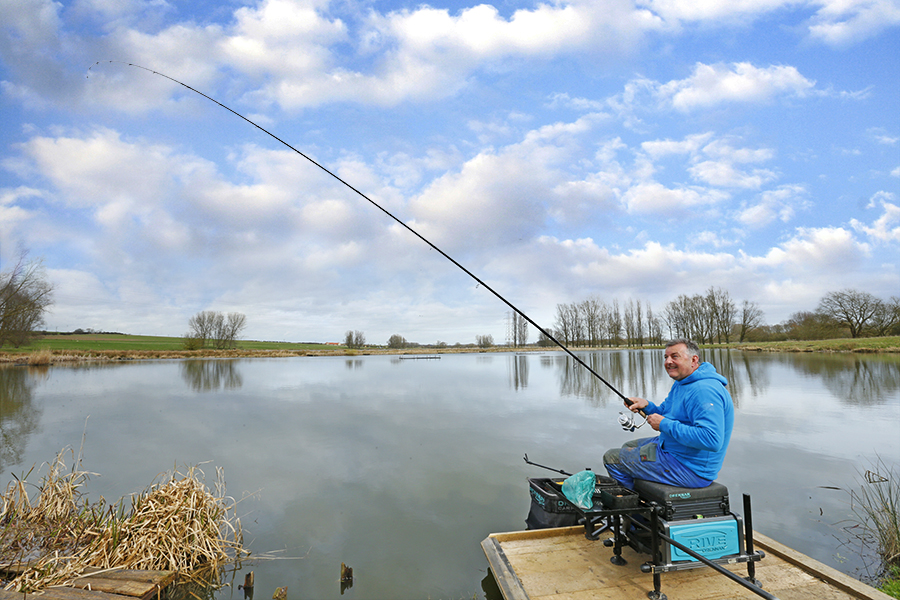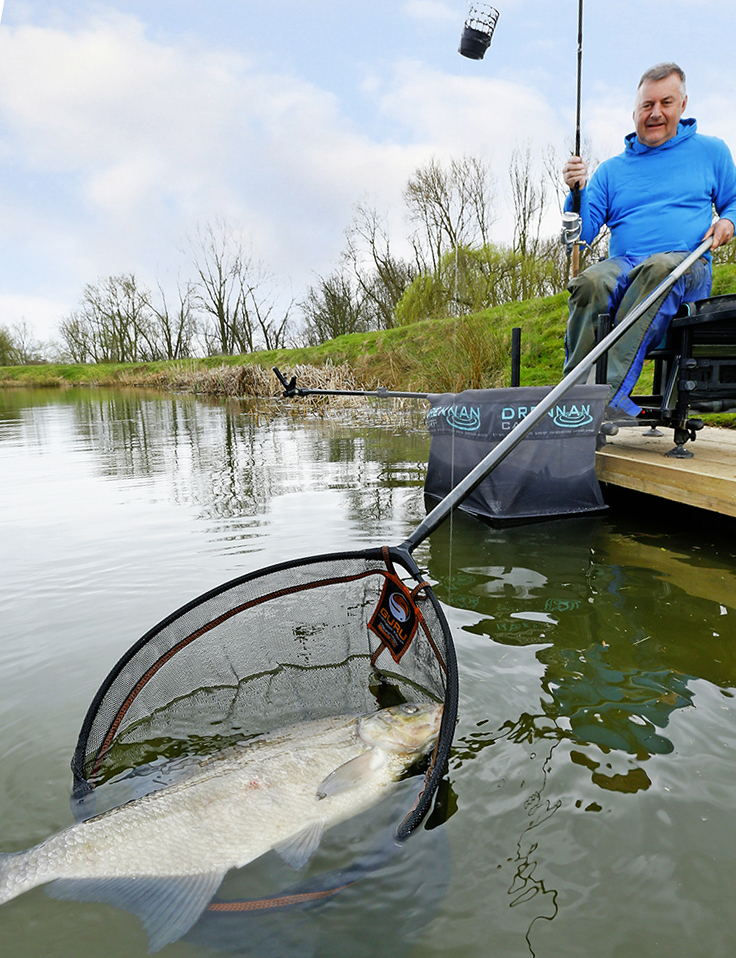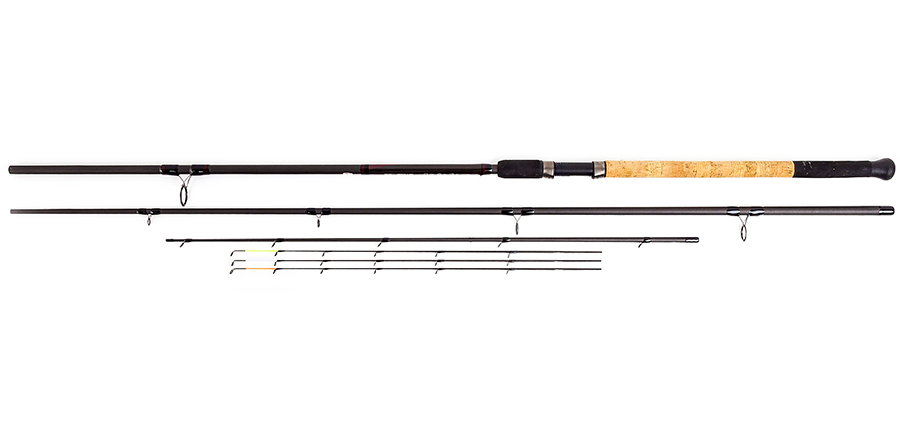Shakespeare Agility Continental Feeder rod



TECH SPEC
Slim carbon blank
Enlarged Zirconium guides
Ergonomically-designed reel seat
Rubber butt cap
Satin matt finish
Maximum mainline rating - 12lb
Recommended maximum casting weight - 5oz
Mono and braid-friendly guides
Shakespeare Agility Continental Feeder rod. This range of continental feeder rods bearing the famous Shakespeare mark is aimed squarely at fans of big, open-water venue fishing.
Designed and constructed to cope with the heaviest of feeders, the fastest of flows and the longest of casts, the rods come in 12ft, 13ft and 14ft lengths and are well-suited to the pursuit of big bream from expansive, deep venues. So why would these rods be of any interest at all to the UK match angler, I hear you ask?
Well I’ll tell you. It was brought to my attention that the 14ft Agility Continental in particular has furtively become one of the most sought-after long-chuck big feeder rods on the market. And not just for targeting stillwater bream either; it’s also rumoured to be very much ‘at home’ on big rivers such as the Severn and Trent. A quick call to Shakespeare revealed my source’s information to be well-founded; the company are currently completely out of stock of the 14ft model, due to an apparent surge in interest. However, the Alnwick-based firm did have the other two lengths in stock, and could get one sent out for live testing purpose immediately.
Although I would have liked to get my mitts on the 14ft model, I wasn’t overly disappointed at it not being available, as I wouldn’t be casting huge distances into really deep water, or using ultra-long hooklengths. A 14ft feeder rod is a highly-specialised tool, and on the rare occasion I have used them - which has been mainly in Holland - they have always felt a little bit alien, so I was more than happy with the 13ft model which I was sure would prove just as good as the slightly longer version.
Two days later the rod dropped on to my desk, and I couldn’t wait to get a look at it. A quick in-office inspection revealed a pleasing matt satin-finished three-piece high-modulus carbon blank. It has been designed with an ‘old-school’ fast-tapering casting action, with more than enough poke through its middle and butt sections to make distance casting a doddle.
Plus, it’s also got a high weight loading point, which kicks in around halfway down the carrier section, meaning it shouldn’t feel wobbly or unbalanced when a heavy feeder is attached to it. Other key features included three carbon push-in quivertips and a superb set of enlarged-diameter Zirconium Oxide guides, ideal for use with all braided and mono mainlines, and certainly wide enough to allow the safe snag-free passage of shockleader knots.
With the river closed season now upon us, I was slightly limited with regards to venue choice, especially as the bream stocks in most of the large acreage open-water venues such as Ferry Meadows are still only just waking up from their winter slumber. However, I knew that the Northants day-ticket lake Rysons was normally good for a few early spring slabs, and as it’s a fair chuck out to the middle of the lake where the fish normally reside, it would prove a fair casting test for the rod.
My set-up involved using a 10lb fluorocarbon shockleader, tied to a 0.10mm braided mainline, with a 40g distance cage feeder at the business end of things. The first task was to lay the table, so I made a dozen quick casts to the lake centre using a big cage feeder loaded with pellets, groundbait and dead red maggots. The blank hardly flexed during the loosefeeding process, with the mainline hitting the clip easily on every cast and the shockleader fairly sizzling through the rod’s enlarged guides. The blank’s casting action is best described as clean and crisp, but if I were to be hyper-critical I’d say it’s maybe a little on the heavy side. However, with minimal recoil, I knew it would be no bother at all to achieve extreme casting ranges.
An hour later the rod’s tip trembled, followed by the unmistakable steady pull-round as a big slab picked up the treble maggot hookbait. Two minutes and two big head shakes later we parted company when the hook pulled out. Unfortunately, this scenario unfolded three more times before a change to a larger hook and a longer hooklength remedied the problem. Quite simply, the blank’s power can be a little overwhelming when used with smaller hooks, but when coupled with wide gape hooks from a size 14 and upwards, the problem pales into the background.
To summarise, the rod has superb distance-casting credentials and is available at a snip of the price of most distance feeder models. As well as being an awesome tool for tackling large stillwaters at home and abroad, it would make an excellent rod for targeting all fish species on our larger domestic rivers.
THE VERDICT
This 13ft Agility Continental has power with a capital P to burn. Originally designed for the European feeder angler, the rod is ideal for big open-water UK venues, and is also sure to find favour with many river anglers, especially where hefty feeders up to 5oz and strong lines up to 12lb are needed. Price wise, for a long-range heavy feeder rod, it’s the best by some margin of those currently available on the market.
PAY AROUND
£74.99
Mark Sawyer
